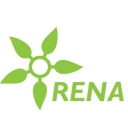ECRAN Modelling: Training Module 3: Practical training on quantitative models and scenario development to be used to assess climate and energy policy options and to set emission target
Date: 21-24.09.2015
Place: Zagreb, Croatia
Organizer: ECRAN Secretariat with EC TAIEX Unit
In most ECRAN beneficiaries there is experience in modelling aided scenario work, especially in the
framework of the preparations of National Communications. However, in many cases this work has
been designed and outsourced by international organisations or other external organisations
without adequate involvement or ownership of the results by the countries. As such, the knowledge
base within the administrations on modelling aided scenario work is limited.
In terms of technical requirements, the focus of the training will be on one specific modelling
platform, the Long-range Energy Alternatives Planning System (LEAP) which has been developed by
the Stockholm Environmental Institute. Of the 8 beneficiaries 6 are already using LEAP, and one
(Kosovo1) has expressed interest in using it. The training program is organized into four modules to
be conducted during one year.
The specific objective of the training program is to increase technical capacities in the countries to
allow them to build technical capacities to carry out modelling of emission scenarios, with the
purpose of enabling them to carry out emission scenario modelling work. The modelling aided
scenario work will benefit countries by helping them meet their future EU and UNFCCC reporting
requirements, and to form a rational position on national efforts contributing to the EU 2050
roadmap and the 2030 Framework, and may assist them by promoting evidence based planning in
energy policy, including in the development of an energy strategy, energy efficiency action plan and
renewable energy action plan.
Depending on the circumstances of the national public administration and future plans of the public
administrations to build modelling capacity inside or outside the public administration, the technical
modelling skills can be used in one of two ways. If the chosen option is to carry out modelling work
within the public administration the exercise will help to build technical capacity and provide a basis
for future work. If the chosen option is to outsource modelling work, the exercise can help
beneficiaries gain a better understanding of modelling work which will enable better communication
with consultants, thereby ensuring that modelling is relevant to policymakers and that policymakers
understand the limits of the work and are able to better interpret the results
Expected Results of the Workshop
- Enhanced technical capacity within the relevant ministries and institutions (in particular ministries responsible for climate, energy, transport, as well as national statistical offices) to implement specific policies and measures to converge with the EU climate change policy and selected EU legislation;
- Strengthened regional network of experts.
- Enhanced understanding of the EU Monitoring Mechanism Regulation in connection with reporting on Policies and Measures as well as Emission Projections
The third meeting of the series will focus on cost related matters, including cost-benefit analysis.
The beneficiaries of the training are the Ministries of Environment of the beneficiary countries who participated in the Module 2 training. Other participants are not accepted as prior knowledge of the LEAP modelling platform is a prerequisite of participation.
1This designation is without prejudice to positions on status, and is in line with UNSCR 1244 and the ICJ Opinion on the Kosovo Declaration of Independence.

